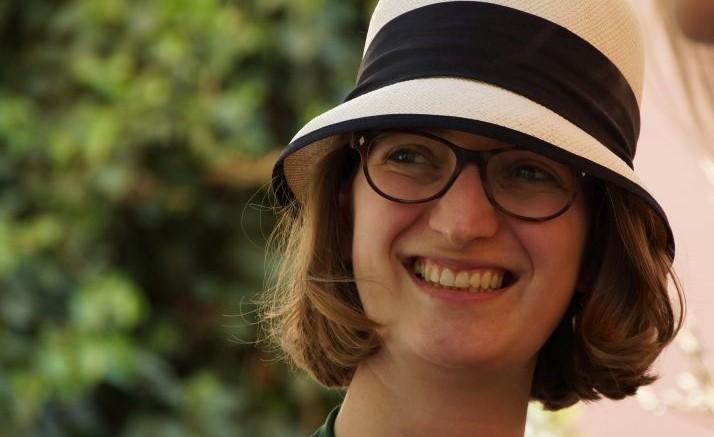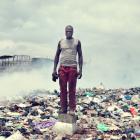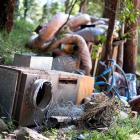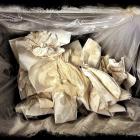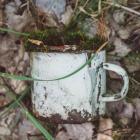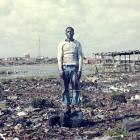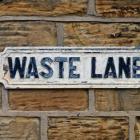About the Exhibition
The Six “Truisms” of the Life of Waste
Everything is waste
Waste is a matter of perspective
Waste needs to be managed
Waste is life
Waste has power
Waste has an expiration date
Waste is one of the most complex, contested, and charged objects we humans encounter in our daily lives. It contains narratives of decay and declension, as well as of resurrection and recovery. Waste is ubiquitous—we cannot avoid running into it one way or another, no matter how hard we try to move waste objects out of sight, to bury and burn them, to dispose of, discard or destroy them. Everything is waste and waste is everywhere.
In our daily routines, we produce about 1.2 kilograms of waste on average. Numbers are steeply rising given that about 99 percent of the stuff we buy we discard within six months. Every year, we dump about 2.12 billion tons of waste, according to 2018 statistics. If we were to put all of this waste onto trucks, they would go around the world 24 times.
Waste is a matter of perspective. What might be a wasteful object to one could easily transform into a useful product for someone else. We reuse and recycle. Waste objects gain or lose value through up- or down-cycling processes.

“Abandoned Factory.” Photograph by Kerttu, 2016.
“Abandoned Factory.” Photograph by Kerttu, 2016.
Photograph by Kerttu, 2016. https://pixabay.com/de/verlassenen-fabrik-aufgegeben-fabrik-1513012/.

This work is licensed as a Public Domain Dedication.
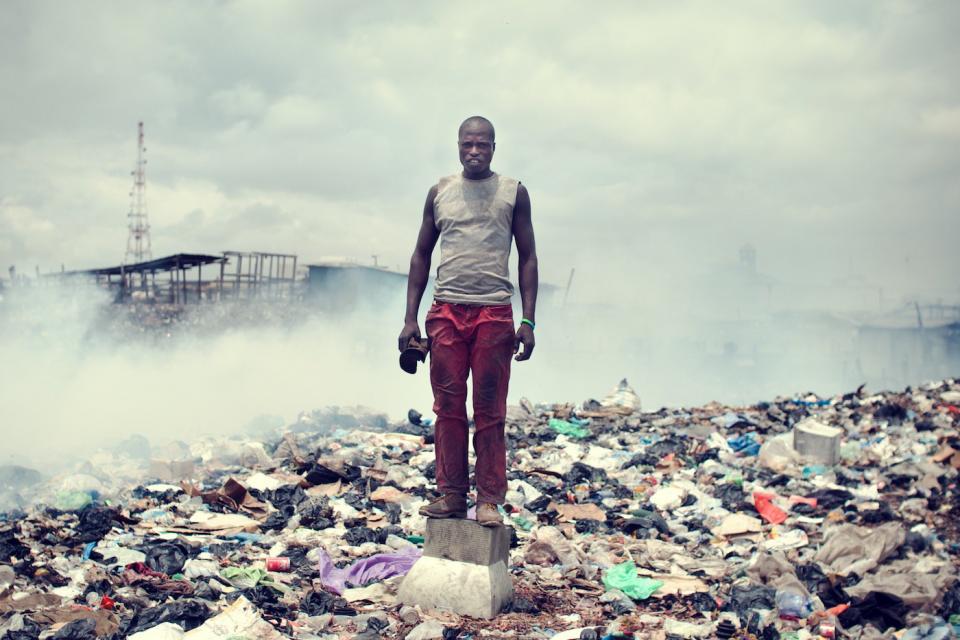
E-waste picker in Agbogbloshie, Accra, Ghana. Photograph by Kevin McElvaney, 2017.
E-waste picker in Agbogbloshie, Accra, Ghana. Photograph by Kevin McElvaney, 2017.
© 2017 Kevin McElvaney. http://kevin-mcelvaney.com/portfolio/agbogbloshie/.
This work is used by permission of the copyright holder.
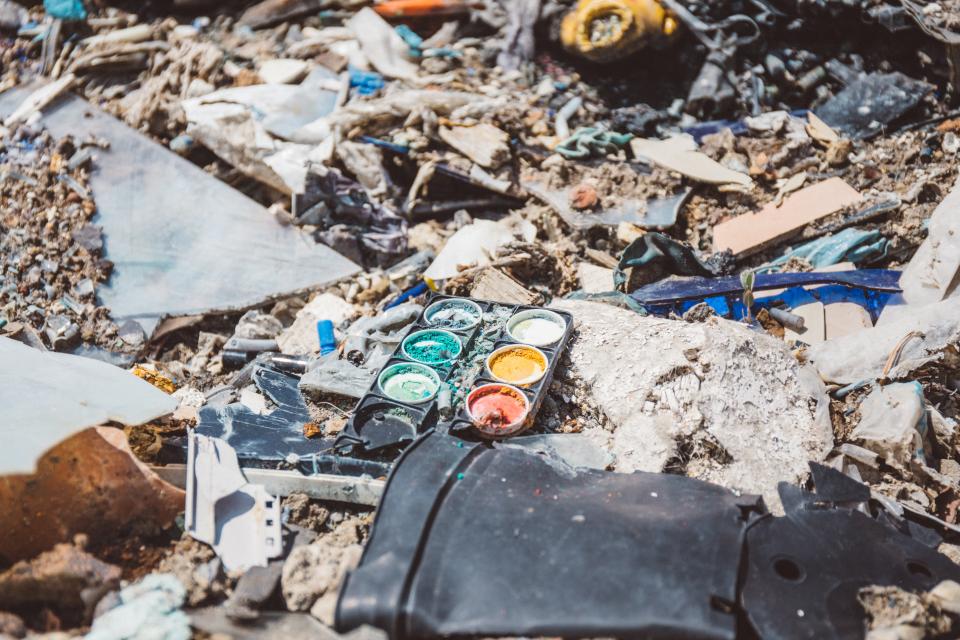
“Waste Dump in Brandenburg.” Photograph by Jonas Stuck, 2018.
“Waste Dump in Brandenburg.” Photograph by Jonas Stuck, 2018.
Photograph by Jonas Stuck, 2018.
 This work is licensed under a Creative Commons Attribution-NonCommercial 3.0 Unported License.
This work is licensed under a Creative Commons Attribution-NonCommercial 3.0 Unported License.
Waste is also a matter of our position in life and on this planet. Generally, the higher the income level and rate of urbanization, the greater the amount of solid waste we produce. OECD countries produce almost half of the world’s waste, while regions in Africa and South Asia produce the least.
Waste has an agenda and waste exerts power. Processes of waste production, management, and reculturation align with patterns of racial and social stratification. At the same time, waste harms us and the environment. Every year, we dump about eight million tons of plastic into our world’s oceans. This marine waste blocks sunlight to plankton and algae, inhibiting their photosynthesis and eventually leading to their death. This creates food shortages for other species. Plastic accumulates in seabirds and marine mammals and migrates up the food chain where, eventually, we consume it through our food. Similarly, nuclear waste may seep into the ground, contaminate drinking water, and cause cancerous growths or genetic mutations for many generations of animal and plants. Waste is contentious and waste is controversial.
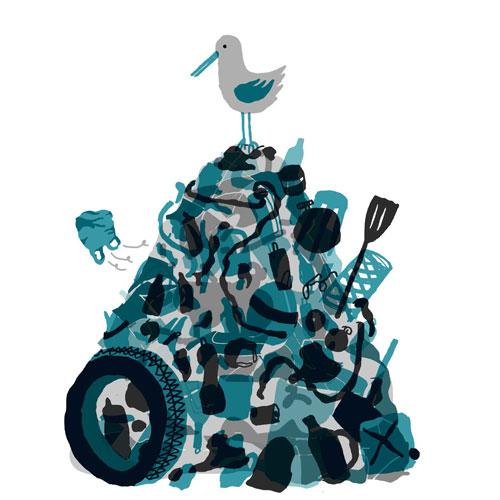
Waste
Leo Koppelkamm
Waste
Leo Koppelkamm
Drawn by Leo Koppelkamm , 2014.
 This work is licensed under a Creative Commons Attribution-NonCommercial-NoDerivatives 4.0 International License.
This work is licensed under a Creative Commons Attribution-NonCommercial-NoDerivatives 4.0 International License.
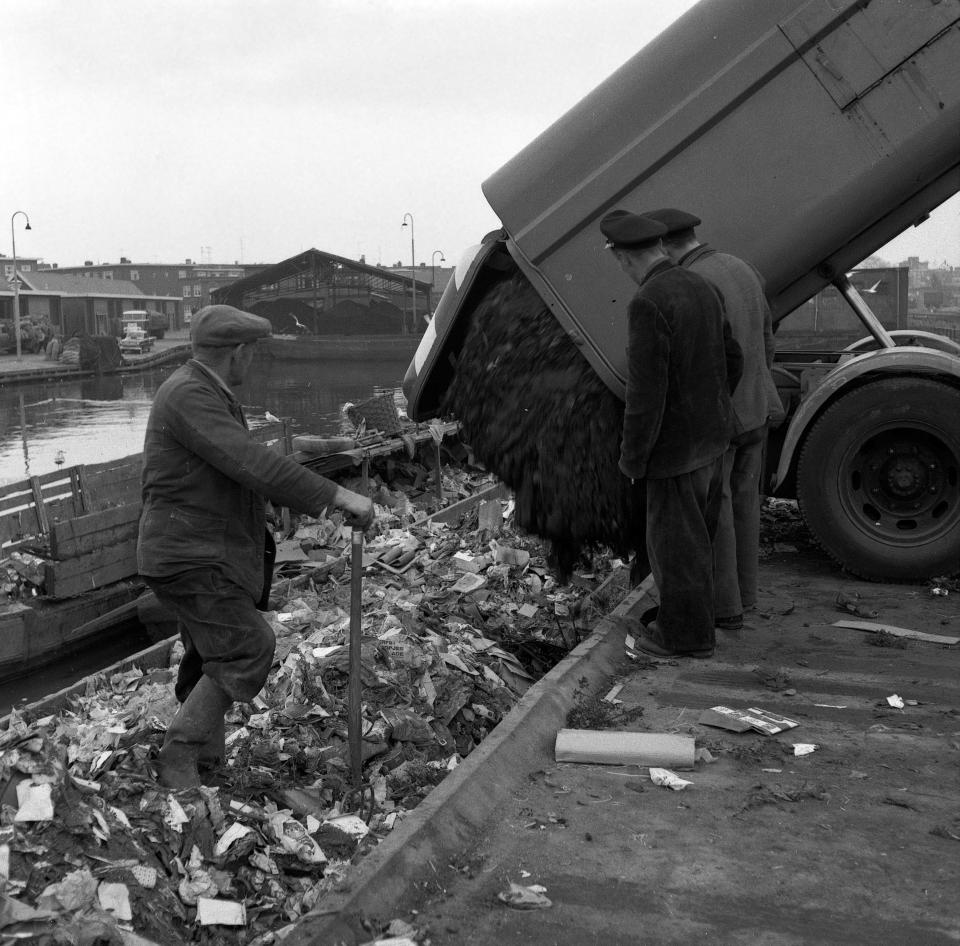
“Sorting of household trash on a ship in Utrecht, 1959.” Photograph by Wouter Hagens, 1959.
“Sorting of household trash on a ship in Utrecht, 1959.” Photograph by Wouter Hagens, 1959.
Photograph by Wouter Hagens, 1959
 This work is licensed under a Creative Commons Attribution-ShareAlike 3.0 Unported License.
This work is licensed under a Creative Commons Attribution-ShareAlike 3.0 Unported License.
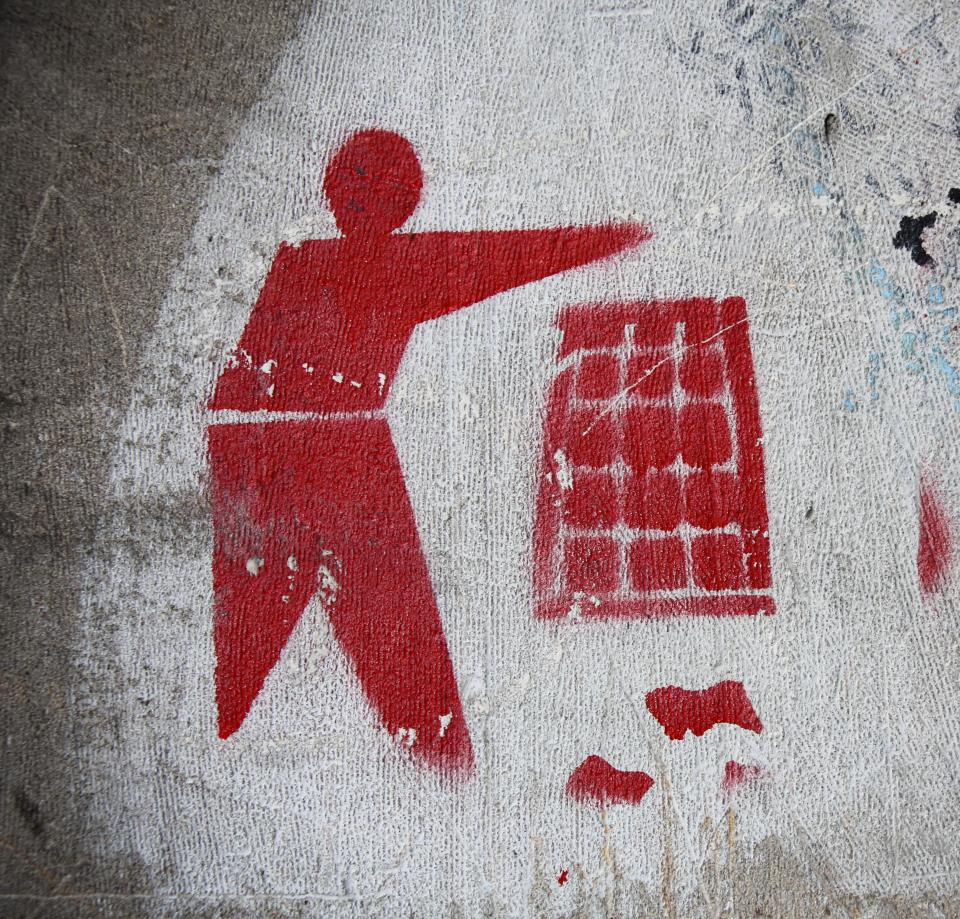
“Trash.” Graffiti in Warsaw Poland, 2014. Photograph by Paul Sableman, 2014.
“Trash.” Graffiti in Warsaw Poland, 2014. Photograph by Paul Sableman, 2014.
Photograph by Paul Sableman, 2014.
 This work is licensed under a Creative Commons Attribution 2.0 Generic License.
This work is licensed under a Creative Commons Attribution 2.0 Generic License.
Since it is impossible to tell the story of waste from a single perspective, or to come up with one all-encompassing definition, I have decided to tell you the story of waste through six truisms. They display waste’s myriad facets as well as the story’s complexity. Each truism corresponds with one of the chapters of this virtual exhibition, without being exclusive to it. Each offers you a way to navigate the life of waste. Since I see waste’s life on a circular orbit, you can explore the chapters in any order you like. Whatever you do, be sure to play a round of Garbage Dreams.
Acknowledgments
This exhibit is intricately linked as well as deeply indebted to the Rachel Carson Center’s Environment and Society Portal. It was the portal’s director, Kim Coulter, who first planted the inspiration for this exhibition based on the Portal’s extensive material. Intrigued by the idea, I sat endless hours sorting and sifting, reading and watching everything that the Portal had to offer on waste. Ruhi Deol, the Portal’s research associate, helped me in continuous, deep and engaged conversations to translate my ideas into a curated, digital assemblage of knowledge on waste. She did not tire to reach out to authors and publishers about open access publication rights and gracefully accepted when my scholarly thirst carried me beyond what the Portal initially had to offer. I owe great thanks to the archival treasures of the Portal as I do to the people that breathe life into it and that believe in the merits of digital scholarship! My thanks also go out to Wanling Hu and Christina Lennartz, my research assistants, who have not tired reading, commenting, researching and cutting as well as my team at Hazardous Travels, Ayushi Dhawan, Maximilian Feichtner and Jonas Stuck who have graciously shared photographs from their research for this exhibition. Still, while the exhibit has been touched and shaped through the context of the Rachel Carson Center, its staff and fellows in more ways than I can tell, all the exhibition’s flaws and short-comings are entirely mine.
About the Author
Dr. Simone M. Müller is Project Director and Principal Investigator of the DFG Emmy Noether Research Group “Hazardous Travels: Ghost Acres and the Global Waste Economy” at the Rachel Carson Center for Environment and Society, Munich. She works at the intersection of globalization studies, economic and social history, and environmental humanities. Her research interests range from the international trade in hazardous waste material and the intellectual history of economic ecological thinking, to green city concepts and the study of ocean space. She has received numerous awards and fellowships, among them from the Smithsonian Institution, the Science History Institute, and the University of Pennsylvania. Simone is a member of the Young ZiF (Center for Interdisciplinary Research) of the University of Bielefeld and in 2017 was nominated as one of the leading female academics in her field by the German Research Foundation (DFG) and the Bosch Foundation. She can be reached at simone.mueller@rcc.lmu.de.
How to Cite
Müller, Simone M. “The Life of Waste.” Environment & Society Portal, Virtual Exhibitions 2018, no. 3. Rachel Carson Center for Environment and Society. doi.org/10.5282/rcc/8452.
ISSN 2198-7696 Environment & Society Portal, Virtual Exhibitions.
The Rachel Carson Center’s Environment & Society Portal makes archival materials openly accessible for purposes of research and education. Views expressed in these materials do not necessarily reflect the views or positions of the Rachel Carson Center or its partners.
- Previous chapter
- Next chapter


